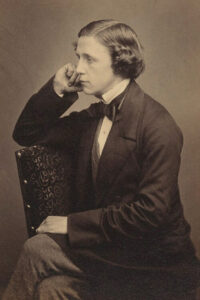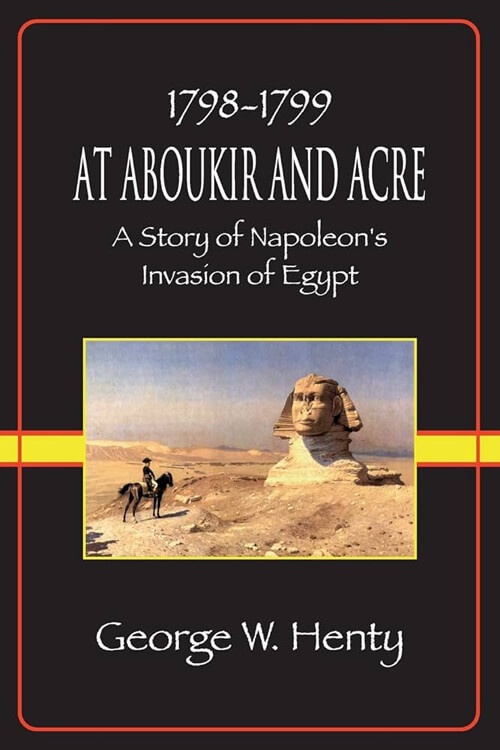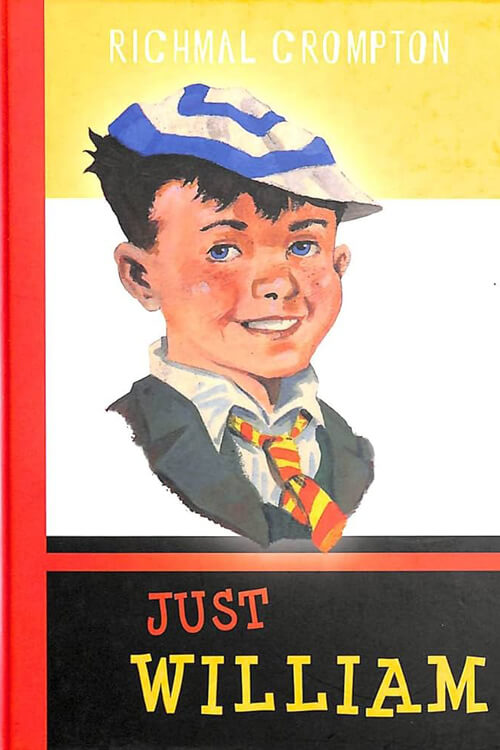
Through the Looking Glass and What Alice Found There
One thing was sure, that the white kitten had had nothing to do with it:—it was the black kitten’s fault entirely. The white kitten had been having its face washed by the old cat for the last quarter of an hour (and bearing it pretty well, considering); so you see, it couldn’t have had any hand in the mischief.
The way Dinah washed her children’s faces was this: first, she held the poor thing down by its ear with one paw, and then with the other paw she rubbed its face all over, the wrong way, beginning at the nose: and just now, as I said, she was hard at work on the white kitten, which was lying quite still and trying to purr—no doubt feeling that it was all meant for its good.
But the black kitten had been finished with earlier in the afternoon, and so, while Alice was sitting curled up in a corner of the great arm-chair, half talking to herself and half asleep, the kitten had been having a grand game of romps with the ball of worsted Alice had been trying to wind up, and had been rolling it up and down till it had all come undone again; and there it was, spread over the hearth-rug, all knots and tangles, with the kitten running after its tail in the middle.
‘Oh, you wicked little thing!’ cried Alice, catching up the kitten, and giving it a little kiss to make it understand that it was in disgrace. ‘Really, Dinah ought to have taught you better manners! You ought, Dinah, you know you ought!’ she added, looking reproachfully at the old cat, and speaking in as cross a voice as she could manage—and then she scrambled back into the arm-chair, taking the kitten and the worsted with her, and began winding up the ball again. But she didn’t get on very fast, as she was talking all the time, sometimes to the kitten, and sometimes to herself. Kitty sat very demurely on her knee, pretending to watch the progress of the winding, and now and then putting out one paw and gently touching the ball, as if it would be glad to help if it might.
‘Do you know what tomorrow is, Kitty?’ Alice began. ‘You’d have guessed if you’d been up in the window with me—only Dinah was making you tidy, so you couldn’t. I was watching the boys getting in sticks for the bonfire—and it wants plenty of sticks, Kitty! Only it got so cold, and it snowed so, they had to leave off. Never mind, Kitty, we’ll go and see the bonfire tomorrow.’ Here Alice wound two or three turns of the worsted round the kitten’s neck, just to see how it would look: this led to a scramble, in which the ball rolled down upon the floor, and yards and yards of it got unwound again.
‘Do you know, I was so angry, Kitty,’ Alice went on as soon as they were comfortably settled again, ‘when I saw all the mischief you had been doing, I was very nearly opening the window, and putting you out into the snow! And you’d have deserved it, you little mischievous darling! What have you got to say for yourself? Now don’t interrupt me!’ she went on, holding up one finger. ‘I’m going to tell you all your faults.
Read or download Book
Lewis Carroll
Charles Lutwidge Dodgson (27 January 1832 – 14 January 1898), better known by his pen name Lewis Carroll, was an English author, poet, mathematician and photographer.
Biography.
His most notable works are Alice’s Adventures in Wonderland (1865) and its sequel Through the Looking-Glass (1871). He was noted for his facility with wordplay, logic, and fantasy. His poems Jabberwocky (1871) and The Hunting of the Snark (1876) are classified in the genre of literary nonsense.
Carroll came from a family of high-church Anglicans and developed a long relationship with Christ Church, Oxford, where he lived for most of his life as a scholar and teacher. Alice Liddell – a daughter of Henry Liddell, the Dean of Christ Church – is widely identified as the original inspiration for Alice in Wonderland, though Carroll always denied this.
An avid puzzler, Carroll created the word ladder puzzle (which he then called “Doublets”), which he published in his weekly column for Vanity Fair magazine between 1879 and 1881. In 1982 a memorial stone to Carroll was unveiled at Poets’ Corner in Westminster Abbey. There are societies in many parts of the world dedicated to the enjoyment and promotion of his works.
Early life
Dodgson’s family was predominantly northern English, conservative, and high-church Anglican. Most of his male ancestors were army officers or Anglican clergymen. His great-grandfather, Charles Dodgson, had risen through the ranks of the church to become the Bishop of Elphin in rural Ireland. His paternal grandfather, another Charles, had been an army captain, killed in action in Ireland in 1803 when his two sons were hardly more than babies. The older of these sons, yet another Charles Dodgson, was Carroll’s father. He went to Westminster School and then to Christ Church, Oxford. He reverted to the other family tradition and took holy orders. He was mathematically gifted and won a double first degree, which could have been the prelude to a brilliant academic career. Instead, he married his first cousin Frances Jane Lutwidge in 1830 and became a country parson.
Dodgson was born on 27 January 1832 at All Saints’ Vicarage in Daresbury, Cheshire, the oldest boy and the third oldest of 11 children. When he was 11, his father was given the living of Croft-on-Tees, Yorkshire, and the whole family moved to the spacious rectory. This remained their home for the next 25 years. Charles’ father was an active and highly conservative cleric of the Church of England who later became the Archdeacon of Richmond and involved himself, sometimes influentially, in the intense religious disputes that were dividing the church. He was high-church, inclining toward Anglo-Catholicism, an admirer of John Henry Newman and the Tractarian movement, and did his best to instill such views in his children. However, Charles developed an ambivalent relationship with his father’s values and with the Church of England as a whole.
During his early youth, Dodgson was educated at home. His “reading lists” preserved in the family archives testify to a precocious intellect: at the age of seven, he was reading books such as The Pilgrim’s Progress. He also spoke with a stammer – a condition shared by most of his siblings – that often inhibited his social life throughout his years. At the age of twelve, he was sent to Richmond Grammar School (now part of Richmond School) in Richmond, North Yorkshire.






